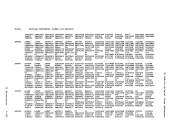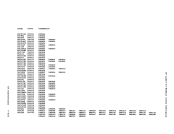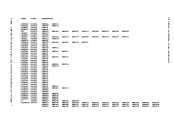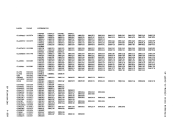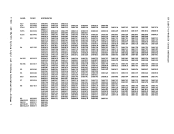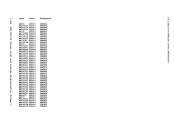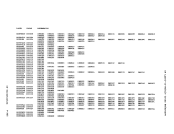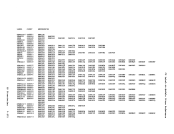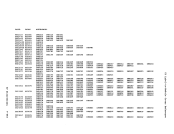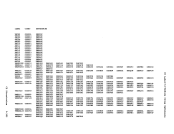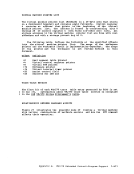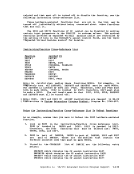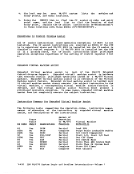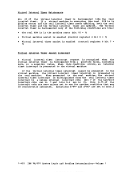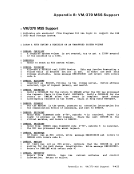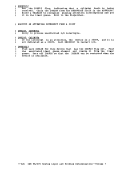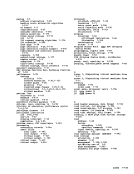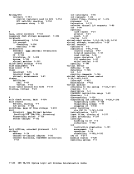The SYSCOR .acro definition can be found in !AL310 Planning and ~stem ~~~§!!QD ~y!g~. CP provides three performance options, locked pages, reserved page
fraaes, and a virtual=real area, to reduce the pagingrequirements of
virtual machines. Generally, these facilities requiresoae dedication
of real storage to the chosen virtualmachine and, therefore, improve its performance at the expense of other virtual .achines. LOCKED PAGES OPTION The LOCK co •• and, which is available to the systea operator (with
privilege class A), can be used to permanently fix or lock specific user
pages of virtual storage into real storage. In so doing, all pagingI/O for these page frames is eliminated. Since this facility reduces total real ~toragp r~sourc~s ~eal page fraaes) that are available to support other virtual aachines, only
frequently used pages should be locked into real storage.Since page
zero (the first 4096 bytes) of a virtual .achine storage is referred to
and changed frequently (for exaaple, whenever a virtual aachine
interrupt occurs or when aCSW is stored), it should be the first page
of a particular virtual machine that an installation considers locking.
The virtualmachine interrupt handler pages aight also be considered
good candidates for locking.Other pages to pe locked depend upon the work being done by the
particular virtual aachine and its usage of virtual storage.
Thenormal CP paging aechanism selects unreferenced page fraaes in
real storage for replacementby active pages. Page fraaes belonging to
inactive virtual aachines will all eventually be selected and paged out
if the real storage fraaes are needed to support active virtual aachine
pages.When virtual aachine activity is initiated on an infrequent or
irregular basis, such asfroa a remote terminal in a teleprocessing
inquirysystem, soae or all of its virtual storage aay have been paged
out before thetime the virtual machine must begin processing. Soae pages will then have to be paged in so that the virtual aachine can
respond to the teleprocessing requestcompared with running the saae teleprocessing prograa on a real machine. This paging activity aay cause
an increase in thetiae required to respond to the request coapared with
running the teleprocessingprogram on a real aachine. Further response tiae is variable, depending upon the number of paging operations that aust occur.
Locking specific pages of the virtual aachine'sprograa into real
storageaay ease this problem, but it is not always easy nor possible to
identify which specific pages will always be required.Once a page is locked, it reaains locked until either the user logs
off or thesystem operator (privilege class A) issues the UNLOCK comaand for that page. If the "locked pages" option is in effect and the user
loads his system again (viaIPL) or loads another systea, the locked
pages are refreshed and the virtual machine's locked pages are unlockedby the system. The SYSTEM CLEAR command, when invoked, clears virtual
aachine storage, including the user's locked pages.
1-28IBM VM/310 System Logic and Problem Determination--Voluae 1
fraaes, and a virtual=real area, to reduce the paging
virtual machines. Generally, these facilities require
of real storage to the chosen virtual
privilege class A), can be used to permanently fix or lock specific user
pages of virtual storage into real storage. In so doing, all paging
frequently used pages should be locked into real storage.
zero (the first 4096 bytes) of a virtual .achine storage is referred to
and changed frequently (for exaaple, whenever a virtual aachine
interrupt occurs or when a
of a particular virtual machine that an installation considers locking.
The virtual
good candidates for locking.
particular virtual aachine and its usage of virtual storage.
The
real storage for replacement
inactive virtual aachines will all eventually be selected and paged out
if the real storage fraaes are needed to support active virtual aachine
pages.
irregular basis, such as
inquiry
out before the
respond to the teleprocessing request
an increase in the
running the teleprocessing
Locking specific pages of the virtual aachine's
storage
identify which specific pages will always be required.
off or the
loads his system again (via
pages are refreshed and the virtual machine's locked pages are unlocked
aachine storage, including the user's locked pages.
1-28






















































































































































































































































































































